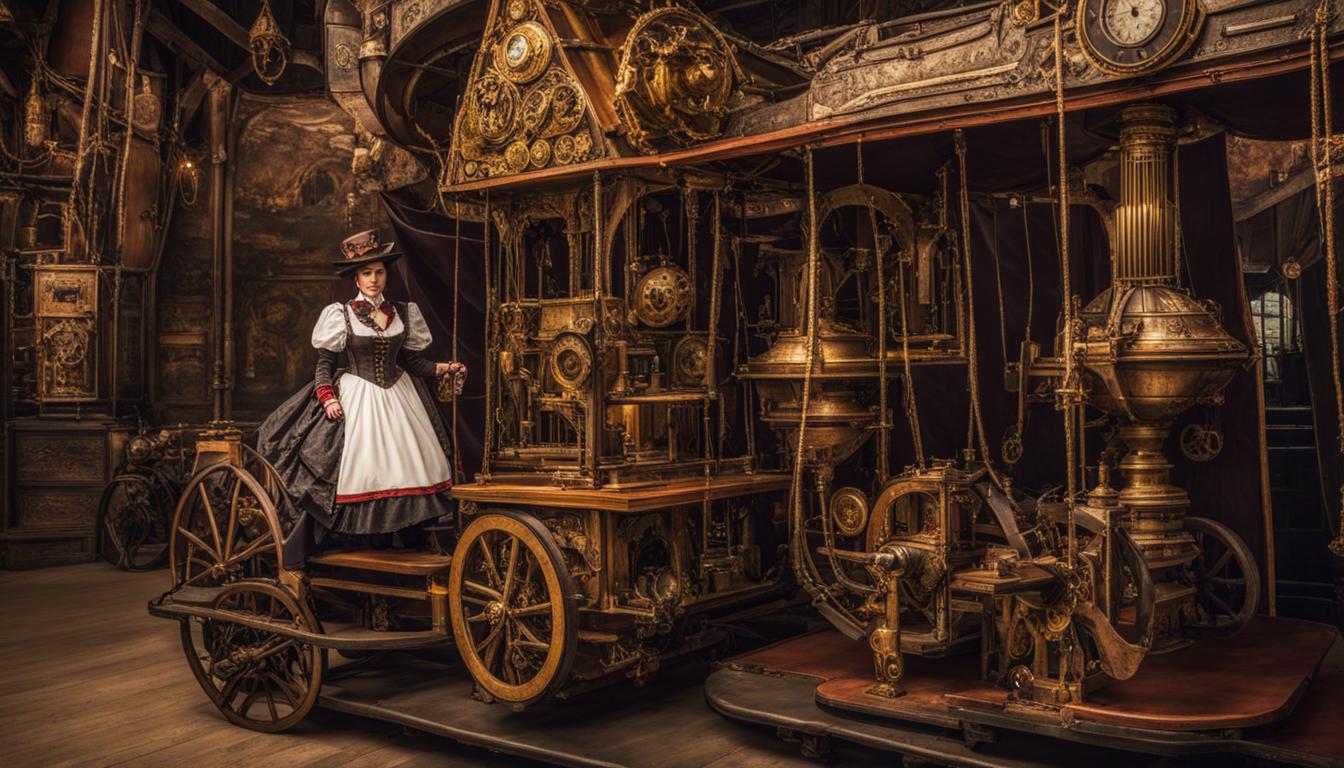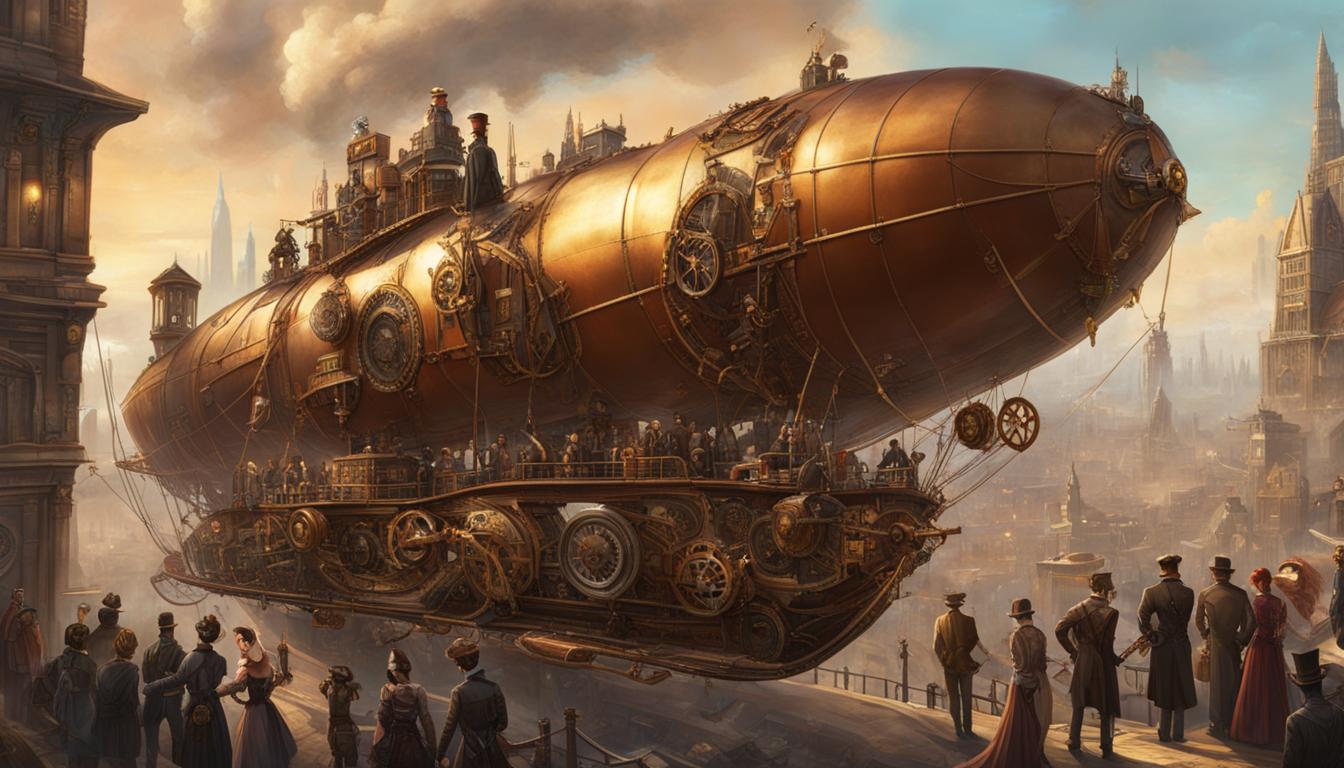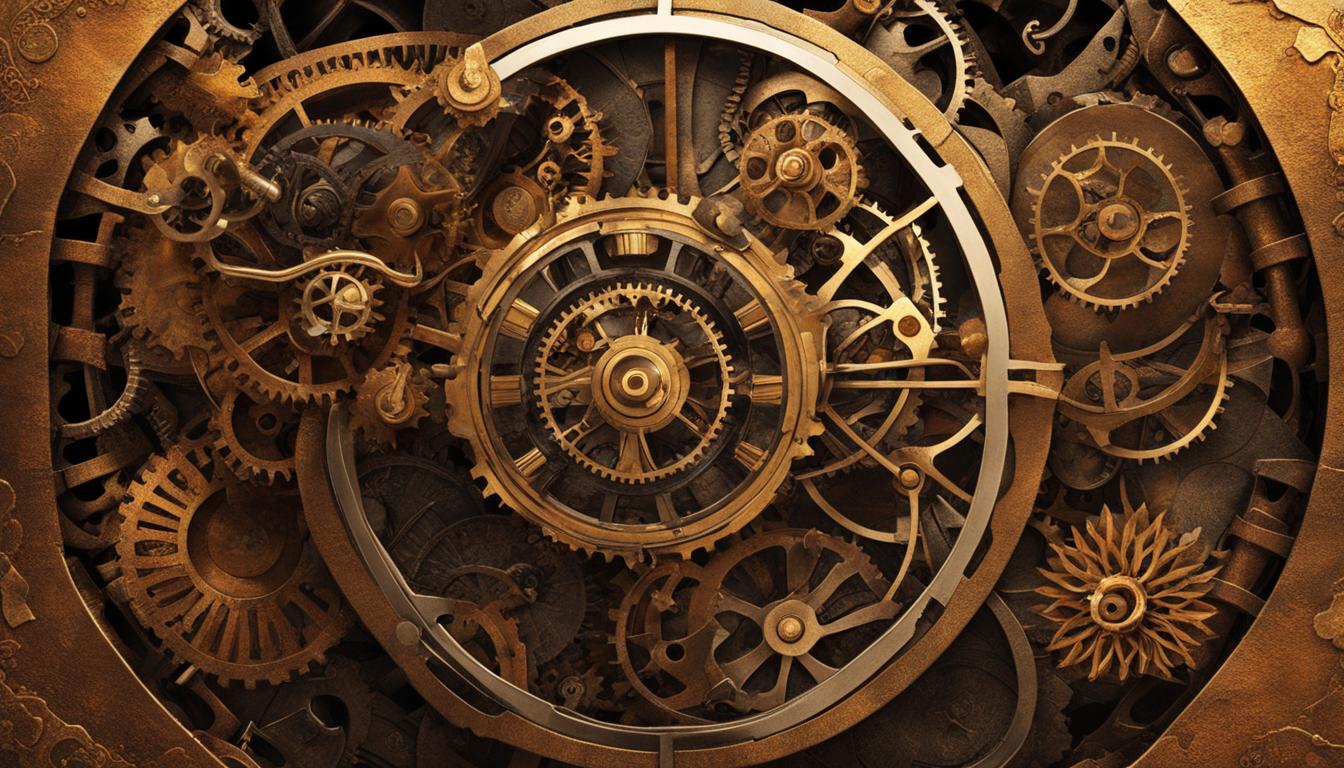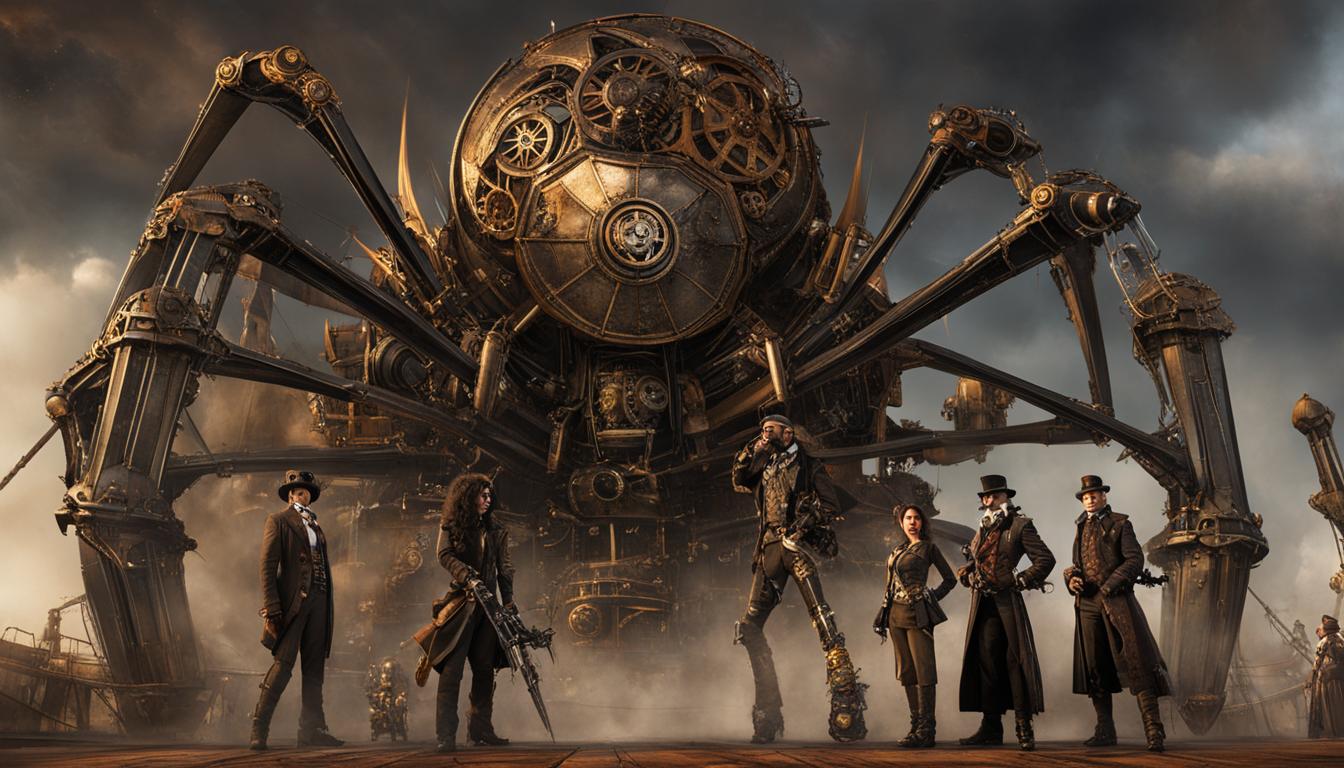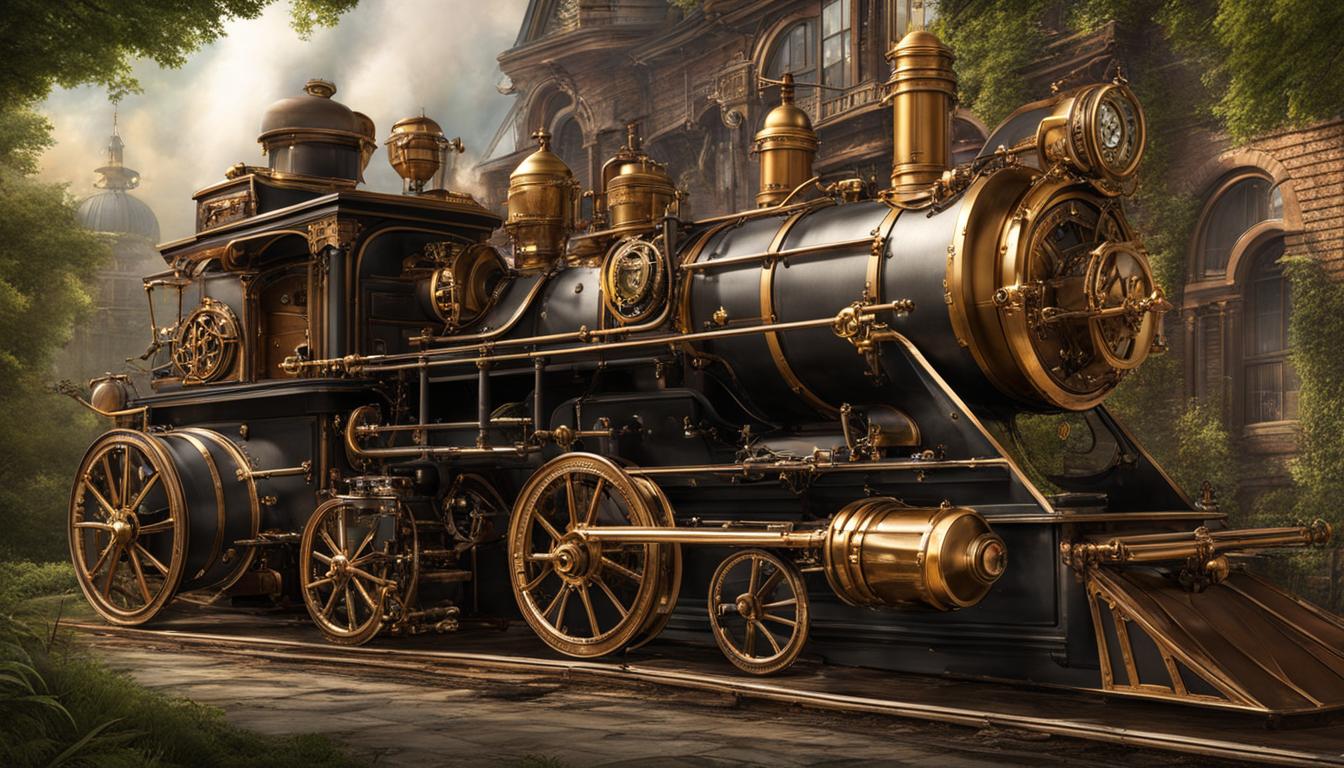Steampunk, a captivating subgenre of science fiction, has taken the world by storm with its unique blend of history and imagination. In this article, we delve into the fascinating tension between historical authenticity and creative freedom that lies at the heart of steampunk creations. From literature to art and film, the steampunk community is committed to crafting alternative historical narratives while remaining faithful to the spirit of the Victorian era.
Steampunk has become synonymous with the balancing act of fact and fiction. By seamlessly merging historical details with innovative storytelling, steampunk creators transport readers to a world where steam-powered technology reigns supreme and Victorian settings come to life in vivid detail. While maintaining a commitment to historical accuracy, steampunk works also allow for imaginative exploration and the creation of alternative timelines.
Key Takeaways:
- Steampunk combines historical authenticity with creative freedom.
- The subgenre draws inspiration from the Victorian era and steam-powered technology.
- Themes of rebellion, innovation, and social reform are common in steampunk works.
- Popular steampunk works include “The Difference Engine,” “Mortal Engines,” and “Boneshaker.”
- Extensive research is crucial for crafting authentic and engaging steampunk stories.
Understanding the Steampunk Subgenre
Steampunk, a captivating subgenre of science fiction, transports readers to a unique blend of history and imagination. Rooted in the Victorian era and the Industrial Revolution, steampunk draws inspiration from the steam-powered technology and societal advancements of the 19th century. This subgenre offers alternative historical narratives that deviate from real history, allowing authors to craft intriguing stories that challenge conventional norms.
Within the world of steampunk, the Victorian era serves as a rich backdrop for storytelling. Steam-powered machinery, such as steam engines, airships, and intricate clockwork devices, are central elements in these narratives. The Victorian setting enhances the atmosphere, often featuring gas-lit streets, elegant attire, and a focus on scientific exploration.
While steampunk authors strive for historical authenticity, they also embrace creative freedom. Alternative historical narratives allow for imaginative innovation, enabling authors to explore what could have been in a world powered by steam. These narratives often incorporate fantastical elements, such as magic, mythical creatures, or advanced technology that surpasses the limitations of the Victorian era.
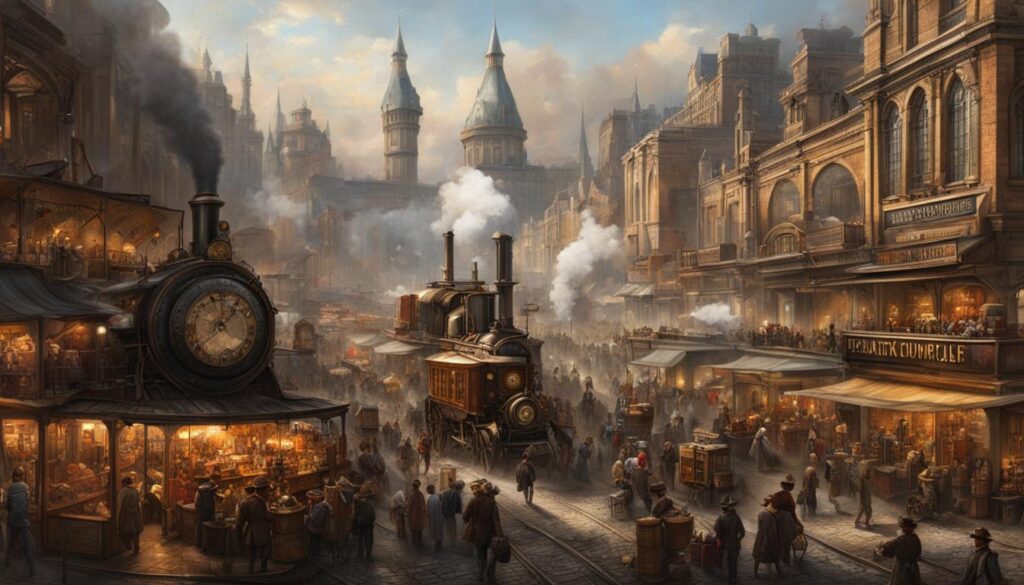
Popular Steampunk Works
Steampunk has given rise to numerous captivating works that showcase its unique blend of history and imagination. These works have captivated readers and contributed to the subgenre’s growing popularity. Here are some notable examples of popular steampunk works:
- The Difference Engine by William Gibson and Bruce Sterling: This seminal steampunk novel imagines a world where Charles Babbage’s Analytical Engine, an early mechanical computer, was successfully constructed in the 1800s. It explores themes of technology, politics, and the impact of the industrial revolution.
- Mortal Engines by Philip Reeve: Set in a post-apocalyptic world where cities roam on giant wheels, this series takes readers on thrilling journeys filled with adventure, intrigue, and complex characters. It combines elements of steampunk with dystopian fiction.
- Boneshaker by Cherie Priest: This novel combines the excitement of the gold rush with a zombie apocalypse, all set in a steampunk-infused city called Seattle. It captures the essence of steampunk’s adventurous spirit and showcases the genre’s ability to blend different genres seamlessly.
- Perdido Street Station by China Miéville: This critically acclaimed novel is set in the city of New Crobuzon, a sprawling metropolis filled with steampunk-inspired technology, magical creatures, and a richly developed world. It delves into themes of politics, oppression, and the consequences of technological advancement.
- Airborn by Kenneth Oppel: This young adult novel transports readers to a world of airships and sky pirates. It follows the adventures of Matt Cruse, a cabin boy, as he discovers a hidden civilization in the sky. With its captivating storytelling and unique setting, it showcases the sense of wonder that steampunk can evoke.
These works represent the diversity and creativity within the steampunk genre, offering readers a myriad of imaginative worlds to explore. Each novel brings its own unique spin on the combination of historical authenticity and creative freedom that defines steampunk.
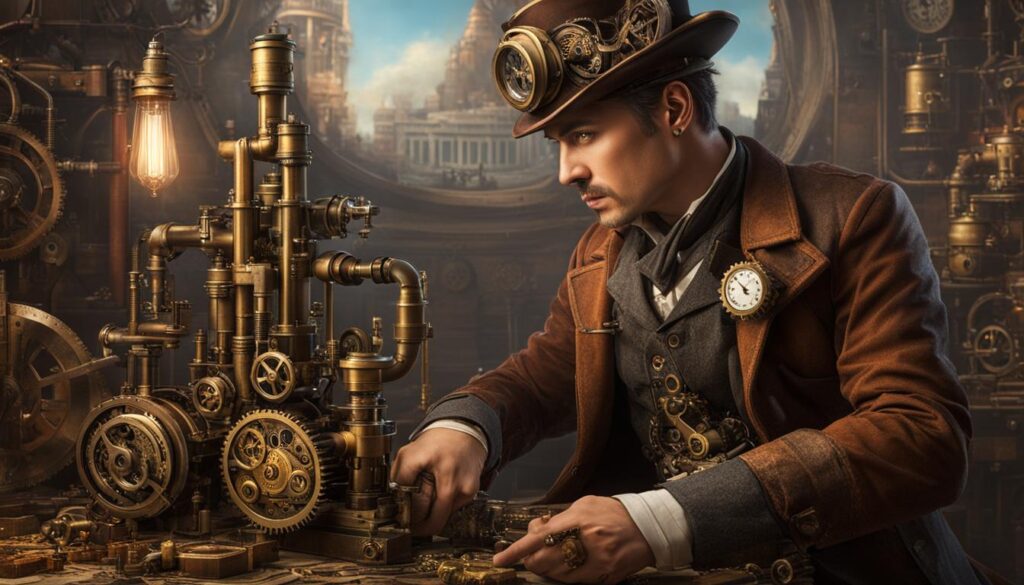
| Title | Author | Setting | Main Themes |
|---|---|---|---|
| The Difference Engine | William Gibson and Bruce Sterling | 19th-century England | Technology, politics, industrial revolution |
| Mortal Engines | Philip Reeve | Post-apocalyptic world | Dystopia, adventure, social hierarchy |
| Boneshaker | Cherie Priest | Steampunk-infused Seattle | Gold rush, zombies, adventure |
| Perdido Street Station | China Miéville | New Crobuzon | Politics, oppression, technology |
| Airborn | Kenneth Oppel | World of airships | Adventure, discovery, coming of age |
This table provides an overview of the featured popular steampunk works, highlighting their respective authors, settings, and main themes. It demonstrates the range of narratives within the genre, from alternate historical scenarios to post-apocalyptic adventures.
Importance of Research in Steampunk Writing
When it comes to crafting a captivating steampunk story, thorough research is an essential ingredient. The genre’s unique blend of history and imagination relies on a deep understanding of historical authenticity, technological innovation, social context, alternative histories, and literary influences.
Historical authenticity is crucial in steampunk writing, as it provides a solid foundation for the narrative. Extensive research into the Victorian era allows authors to accurately depict the societal norms, technological advancements, and cultural nuances of the time. This attention to detail not only adds credibility to the story but also immerses readers in a rich and believable world.
Technological innovation is another key aspect of steampunk. Through meticulous research, writers can explore and incorporate the steam-powered machinery and inventions that defined the Victorian era. By understanding how these technologies work and their impact on society, authors can create imaginative and compelling narratives that stay true to the steampunk aesthetic.
Research is the key to unlocking the hidden treasures of alternate histories in steampunk writing. By delving into real historical events and exploring what could have been, authors can weave intricate tales that challenge our understanding of the past. This ability to reimagine history is what sets steampunk apart and allows for limitless storytelling possibilities.
Alongside historical and technological research, an exploration of the social context is vital in steampunk writing. By examining the social structures, class systems, and political dynamics of the Victorian era, authors can create nuanced and thought-provoking narratives that reflect the complexities of society and explore themes of power, privilege, and social reform.
Literary influences also play a significant role in steampunk writing. By studying classic works of literature from the Victorian era and engaging with contemporary steampunk authors, writers can gain inspiration and insights into the genre. This understanding of the literary landscape allows for the evolution and innovation of steampunk storytelling.
Overall, research is an integral part of the creative process in steampunk writing. It enhances historical authenticity, sparks technological innovation, provides social context, unlocks alternative histories, and draws from a rich literary tradition. By embracing research, steampunk authors can create captivating stories that transport readers to fascinating worlds where history and imagination collide.
Conclusion
The world of steampunk is a delicate balancing act between fact and fiction, where history and imagination intertwine in a mesmerizing dance. Steampunk creators have mastered the art of blending the authenticity of the Victorian era with the boundless creativity of alternative historical narratives, resulting in a genre that continues to captivate audiences.
By merging historical authenticity and creative freedom, steampunk works transport readers to a world where steam-powered technology coexists with intricate social dynamics and rebellious spirits. This fusion of reality and imagination creates a tapestry of storytelling that challenges societal norms, celebrates innovation, and explores the intricacies of human values.
In this ever-evolving subgenre, steampunk enthusiasts find inspiration in the rich tapestry of historical research and literary influences. The ability to strike a delicate balance between fact and fiction allows these creators to craft narratives that both educate and entertain, leaving audiences awestruck by the seamless blending of history and imagination.
Steampunk’s unique platform for storytelling has birthed a vibrant community of writers, artists, and enthusiasts who continue to push the boundaries of what is possible in this eclectic genre. As the steam-powered gears of creativity keep turning, the allure of steampunk remains irresistible, merging authenticity and creativity in a harmonious symphony that keeps the sense of wonder alive.
FAQ
What is steampunk?
Steampunk is a subgenre of science fiction that combines elements of the Victorian era with futuristic ideas.
What historical era is steampunk based on?
Steampunk is firmly rooted in the historical context of the Victorian era and the Industrial Revolution.
How does steampunk deviate from real history?
Steampunk authors take liberties with historical accuracy, creating alternative timelines that deviate from real history.
What themes does steampunk explore?
Steampunk explores rebellion against the status quo, innovation in technology, and social reform.
Can you provide examples of popular steampunk works?
Some popular steampunk works include “The Difference Engine” by William Gibson and Bruce Sterling, “Mortal Engines” by Philip Reeve, “Boneshaker” by Cherie Priest, “Perdido Street Station” by China Miéville, and “Airborn” by Kenneth Oppel.
Why is research important in steampunk writing?
Research helps authors maintain historical authenticity by grounding their narratives in accurate portrayals of the Victorian era. It also allows for the creation of believable alternative histories.
How does steampunk balance historical accuracy and creative freedom?
Balancing historical authenticity and creative freedom is a core challenge for steampunk creators. They strive to strike a delicate balance between fact and fiction to captivate audiences and inspire wonder.

